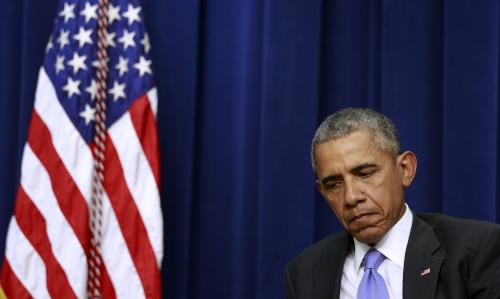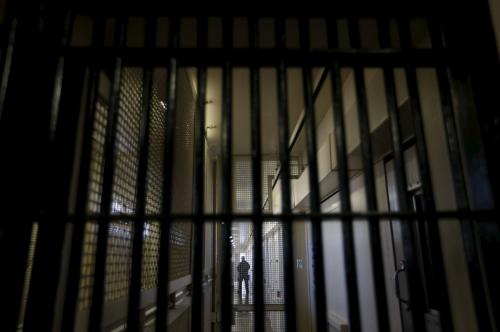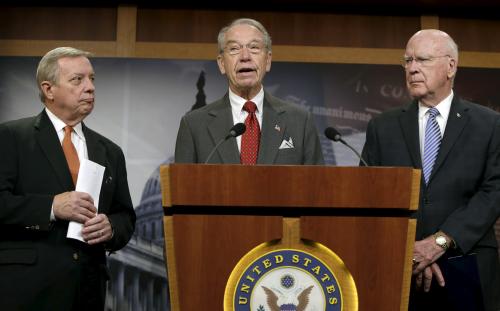In an election year characterized by bitter division, Rep. Bob Goodlatte and Rep. John Conyers, the Chair and Ranking Member of the House Judiciary Committee, have staked bipartisan terrain one of the nation’s most divisive issues: crime and policing. In a recently coauthored opinion piece, Reps. Goodlatte and Conyers rejected the divide between “pro-police” and “pro-racial justice.” They called for “urgent Congressional attention” in addressing the crisis of confidence between police and the communities they have pledged to protect and underscored the importance of local leadership in addressing these difficult issues.
This commitment to local leadership was on display last week in Detroit, where members of the newly formed Policing Strategies Working Group—a coalition of bipartisan lawmakers—highlighted takeaways form a series of roundtables with law enforcement and community leaders. Speaking as co-chairs of the working group, Reps. Goodlatte and Conyers emphasized the role of local leaders in the discussion, debate, and mediation of issues surrounding public safety, police accountability, and aggression towards law enforcement.
Engaging state and local leaders is important not only for addressing community-police relations, but also for reforming the nation’s criminal justice system. To improve the fairness and effectiveness of criminal justice in the United States, federal reform is necessary, but it is far from sufficient. To understand why, let’s situate proposals for federal reform against a few statistics about crime and incarceration.
The most prominent federal reform proposal is the Sentencing and Corrections Reform Act, which has been introduced in the Senate (S. 2123) and in the House (H.R. 3717). According to a summary by the Congressional Research Service, the legislation would ease federal sentencing guidelines for some drug-related crimes, create new mandatory minimum sentences for select other crimes, and in some cases increase the length of the maximum sentences that could be issued. The bill has the backing of powerful lawmakers in both chambers, and, as we’ve written elsewhere, the legislation deserves praise for its evidence-based approach to reform.
By altering federal sentencing guidelines, the legislation would begin to address the size of the prison population, which has ballooned over the course of several decades. According to our analysis of Bureau of Justice Statistics data, the federal population has grown astronomically since 1980: a whopping 786 percent. Although the rate of growth at the state and local growth is less dramatic by comparison—a 345 percent increase and 297 percent increase since 1980, respectively—the number of individuals incarcerated at the state and local levels greatly outpaces the federal prison population.

Parsing prison population another way, in 2014, the federal population of incarcerated individuals comprised just 9 percent (210,567) of the more than 2.3 million individuals incarcerated in the United States. Indeed, 59 percent (1,350,958) are incarcerated at the state level and 32 percent (744,592) are held in local jails.

The causes and correlates of the burgeoning prison population is the subject of intense scholarly debate, as illustrated by the conflicting literature published in leading journals on law and social policy. But, to at least some extent, the prison population buildup depends on the policy choices of state and federal lawmakers, which are made amid a broader social and political climate.
In response to rising crime rates and widespread concern about public safety in the mid-1980s, state and federal lawmakers enacted a series of so-called “tough on crime” measures, including instituting mandatory minimum laws, three strikes laws, and life in prison without the possibility of parole for certain drug and violent offenders. Since then, crime rates have declined precipitously, and the national dialogue on crime and policing has shifted dramatically.
If politicians are to heed calls to reform the criminal justice system, it is essential to recognize that federal lawmakers cannot do it alone. This is precisely why Reps. Goodlatte and Conyers’ emphasis on local leadership is so important. In a tumultuous election year with fading hopes for bills like the Sentencing and Correction Reform Act becoming federal law, the bipartisan focus on empowering local leadership to address these critical issues is a significant source of optimism.






Commentary
Engaging local leaders: A bipartisan path toward criminal justice reform
September 7, 2016